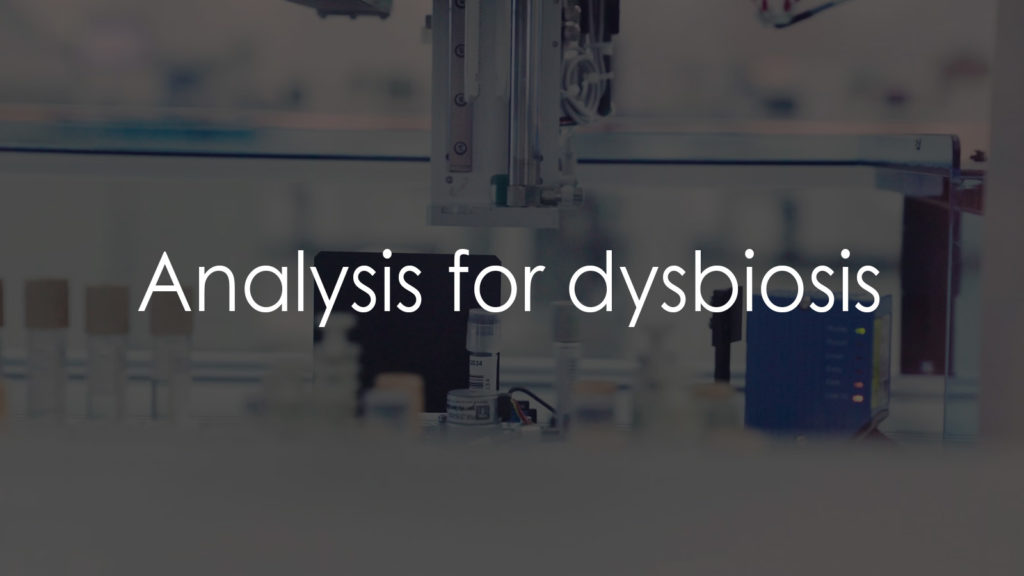Dysbiosis refers to an imbalance in the microbial communities, particularly in the gastrointestinal tract. This imbalance can contribute to various health issues, including digestive problems, immune system disorders, and even mental health conditions. Analyzing dysbiosis involves examining the composition of gut microbiota to identify any irregularities or imbalances. This article will explore the purpose of dysbiosis analysis, the procedure for conducting it, the interpretation of results, and what to consider when receiving the final report.

Why is it needed?
Dysbiosis analysis is essential for several reasons:
- Diagnosing Digestive Disorders: It helps identify underlying microbial imbalances that may cause symptoms like bloating, diarrhea, constipation, and abdominal pain.
- Managing Chronic Conditions: Conditions such as irritable bowel syndrome (IBS), inflammatory bowel disease (IBD), and small intestinal bacterial overgrowth (SIBO) can be better managed with an understanding of gut microbiota.
- Evaluating Immune Function: The gut microbiota plays a crucial role in the immune system. Dysbiosis analysis can help assess immune function and identify potential triggers for autoimmune diseases.
- Mental Health Assessment: Emerging research suggests a link between gut health and mental well-being. Dysbiosis analysis can provide insights into conditions like anxiety, depression, and stress-related disorders.
- Personalized Nutrition and Probiotic Recommendations: Understanding individual microbiota composition can help tailor dietary and probiotic interventions to restore balance and promote health.
Several tests can analyze gut microbiota and assess dysbiosis:
Stool Culture
- Description: Cultures are used to grow and identify bacteria present in the stool.
- Purpose: Helps identify pathogenic bacteria and assess overall microbial diversity.
- Procedure: A stool sample is collected and sent to a laboratory for culture and analysis.
Polymerase Chain Reaction (PCR) Testing
- Description: PCR testing amplifies and detects bacterial DNA in the stool sample.
- Purpose: Provides a detailed analysis of bacterial species present in the gut.
- Procedure: A stool sample is collected and analyzed using PCR techniques to identify and quantify bacterial DNA.
Comprehensive Digestive Stool Analysis (CDSA)
- Description: CDSA evaluates various aspects of gut health, including microbiota composition, digestive enzyme levels, and markers of inflammation.
- Purpose: Offers a comprehensive overview of gut health and dysbiosis.
- Procedure: A stool sample is collected and analyzed in a laboratory, often using a combination of culture, PCR, and other biochemical tests.
Breath Tests
- Description: Breath tests measure gases like hydrogen and methane produced by gut bacteria.
- Purpose: Used to diagnose conditions like SIBO by assessing bacterial overgrowth in the small intestine.
- Procedure: The patient consumes a specific substrate (like glucose or lactulose), and breath samples are collected at intervals to measure gas production.
Procedure for taking the test
The procedure for conducting dysbiosis analysis typically involves the following steps:
- Preparation: Follow any specific instructions given by the healthcare provider, such as dietary restrictions or medication adjustments before sample collection.
- Sample Collection: Depending on the test type, a stool sample or breath sample is collected. For stool samples, patients use a collection kit provided by the laboratory.
- Processing: The collected sample is sent to a laboratory for analysis using the chosen testing method (culture, PCR, CDSA, or breath test).
- Completion: The sample analysis is completed in the laboratory, and results are usually available within a few days to a few weeks, depending on the complexity of the tests.
Interpretation of results
Interpreting dysbiosis analysis results involves understanding the composition and balance of gut microbiota:
Stool Culture
- Normal Flora: Presence of beneficial bacteria such as Lactobacillus and Bifidobacterium.
- Pathogenic Bacteria: Identification of harmful bacteria like Clostridium difficile, Salmonella, or pathogenic strains of E. coli.
- Imbalance: Reduced diversity or overgrowth of specific bacterial species indicating dysbiosis.
PCR Testing
- Bacterial Diversity: A high level of microbial diversity is generally associated with good gut health.
- Pathogenic DNA: Detection of pathogenic bacterial DNA suggests an infection or imbalance.
- Proportions of Bacteria: Abnormal proportions of beneficial to harmful bacteria indicate dysbiosis.
Comprehensive Digestive Stool Analysis (CDSA)
- Microbial Composition: Detailed breakdown of bacterial species present.
- Digestive Markers: Levels of digestive enzymes and inflammation markers.
- Yeast and Parasites: Detection of fungal overgrowth or parasitic infections.
Breath Tests
- Hydrogen and Methane Levels: Elevated levels indicate bacterial overgrowth.
- Patterns Over Time: Timing and levels of gas production help diagnose specific conditions like SIBO.
Important Considerations
When receiving dysbiosis analysis results, several factors should be taken into account:
- Symptom Correlation: Results should be interpreted in conjunction with clinical symptoms and medical history.
- Diet and Lifestyle: Dietary habits, stress levels, and lifestyle factors can significantly influence gut microbiota.
- Probiotics and Medications: Recent use of antibiotics, probiotics, or other medications can affect test results.
- Follow-Up Testing: Regular monitoring may be necessary to assess the effectiveness of treatment and dietary interventions.
Conclusion
Dysbiosis analysis is a valuable tool for diagnosing and managing a range of health conditions related to gut microbiota imbalances. Understanding the types of tests available, their procedures, and how to interpret the results can help individuals and healthcare providers make informed decisions about treatment and lifestyle changes. Regular monitoring and personalized interventions based on dysbiosis analysis can significantly improve health outcomes and overall well-being, making this analysis an essential component of modern healthcare.